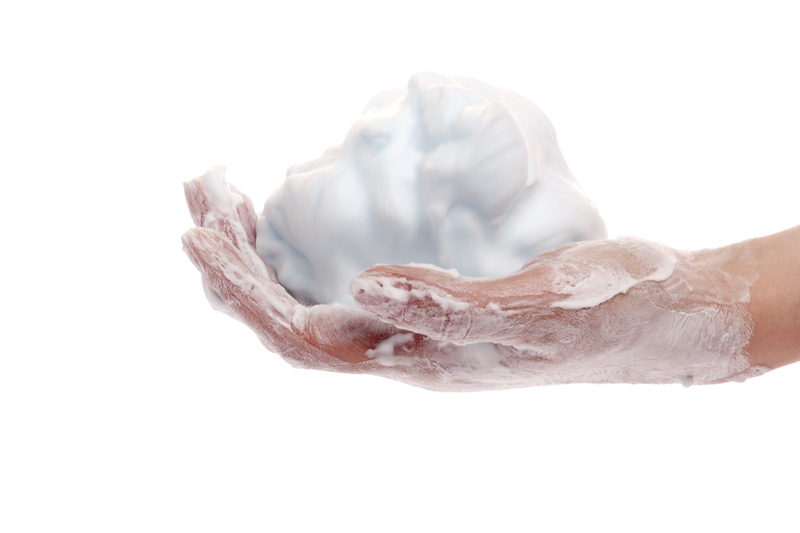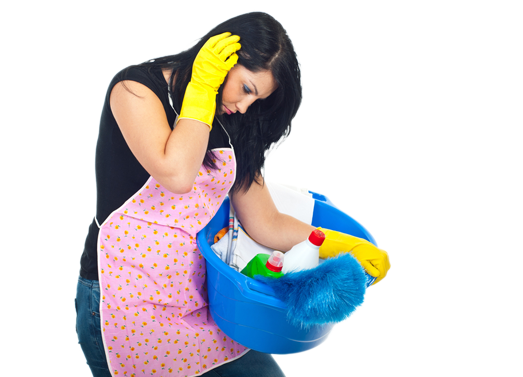Discover the Best Ways to Wash Your Curtains
Posted on 27/08/2025
Discover the Best Ways to Wash Your Curtains
Keeping your curtains clean is essential not just for aesthetic reasons, but also for creating a healthy living environment. Curtains and drapes are notorious dust magnets, and over time they can harbor allergens, pet hair, odors, and even bacteria. If you are wondering about the best ways to wash your curtains, this comprehensive guide will walk you through each step, ensuring your window dressings look fresh and last longer.

Why Is Curtain Cleaning Important?
Curtains frame your windows and add personality to your home; however, they also act as filters, trapping airborne particles and pollutants. Washing your curtains is vital for:
- Health: Removing allergens like dust mites and pollen
- Appearance: Preventing discoloration and keeping colors vibrant
- Longevity: Extending the life of your curtains by preventing fabric decay
- Odor removal: Getting rid of musty smells and household odors
By adopting proper curtain washing techniques, you can maintain a fresh and inviting space year-round.
Understanding Curtain Fabrics: Key to Effective Washing
Before you start, identifying the fabric of your curtains is crucial. The best curtain cleaning method often depends on fabric composition. Common curtain materials include:
- Cotton
- Polyester
- Silk
- Linen
- Velvet
- Wool
- Blends
Always check the care label for manufacturer instructions. If in doubt, test a small, hidden area before proceeding with any washing technique.
How Often Should You Wash Curtains?
Your home environment, lifestyle, and curtain location determine how frequently you should clean your curtains. For optimal cleanliness:
- Lightly clean (vacuum or shake) every 1-2 weeks
- Deep clean (wash or dry clean) every 3-6 months
- More often if you have allergies, pets, or live in a dusty area
The Best Curtain Cleaning Methods
1. Machine Washing Curtains
Machine washing is suitable for most cotton and polyester curtains. Follow these steps to ensure thorough cleaning while preserving fabric integrity:
- Read Care Instructions: Confirm that your curtains are machine washable. Remove hooks, rings, and trims that may snag.
- Shake & Pre-Treat: Shake out loose dust and dirt. Address stains with a gentle stain remover.
- Gentle Cycle: Wash using cold or lukewarm water on a delicate cycle to avoid shrinking or damaging fibers.
- Mild Detergent: Use a gentle detergent, avoiding bleach (unless specifically recommended).
- No Overloading: Wash one or two panels at a time for effective rinsing.
- Air Dry: Avoid tumble dryers. Hang curtains to air dry to prevent shrinkage and creasing.
Pro Tip: Iron curtains while still slightly damp for a smooth, crisp finish.
2. Hand Washing Curtains
Delicate fabrics such as silk, lace, and sheer curtains benefit from hand washing:
- Use Cold Water: Fill a basin or bathtub with cold water and mild detergent.
- Gentle Agitation: Submerge the curtains and gently move them through the water. Do not twist or wring.
- Repeated Rinsing: Rinse until water runs clear, ensuring no detergent residue is left.
- Dry Flat or Hang: Support the fabric as it dries to avoid stretching. Hang away from direct sunlight to prevent fading.
Hand washing ensures the best care for fragile materials, preserving their texture and sheen.
3. Steam Cleaning Curtains
For those seeking quick curtain maintenance, steam cleaning offers a convenient solution. This method is particularly effective for heavy curtains that are difficult to remove.
- Use a Handheld Steamer: Fill your steamer with distilled water.
- Start Top Down: Glide the nozzle from top to bottom, keeping a safe distance to avoid soaking the fabric.
- Target Stains: Focus on heavily soiled areas; be gentle to avoid fabric distortion.
- Let Dry Naturally: Ensure proper ventilation to expedite drying and prevent damp odors.
Steam cleaning also helps eliminate bacteria and freshen your curtains between washes.
4. Dry Cleaning Curtains
Certain fabrics and linings--like velvet, wool, or interlined curtains--must be professionally dry cleaned to avoid damage.
- Check Label: If the tag says 'dry clean only', do not attempt DIY wet cleaning.
- Pack Carefully: Remove accessories and take your curtains to a reputable dry cleaner.
- Special Instructions: Communicate any stains or specific concerns to your dry cleaner.
This process guarantees safety for your most valuable or intricate window treatments.
5. Vacuuming Curtains
For regular upkeep, use a vacuum with a soft-brush attachment:
- Weekly or Bi-Weekly: Vacuum from top to bottom, gently removing dust and pet hair.
- In Situ Cleaning: You don't have to remove the curtains; just ensure the suction is set to low.
This technique prolongs the intervals between deep cleanings and is ideal for allergy sufferers.
Removing Tough Stains and Odors from Curtains
Spot-treating stains is critical for preserving your curtains. Here's how to tackle common issues:
- Greasy stains: Sprinkle baking soda and let sit, then brush away before washing.
- Mold or mildew: Mix vinegar and water (1:3 ratio) and dab gently on affected areas, rinse thoroughly.
- Pet odors: Use an enzyme-based cleaner suitable for fabrics.
- Ink or wine: Blot with a mixture of hydrogen peroxide (test first) or specialized stain removers.
Be gentle--excessive scrubbing can damage fibers or set stains.
Tips for Drying and Ironing Curtains
- Air Dry Whenever Possible: Hang curtains outside or in a well-ventilated room to preserve shape and color.
- Use the Right Iron Setting: Iron according to fabric type; delicate or synthetic fabrics require lower temperatures.
- Steam for Wrinkles: A garment steamer can remove wrinkles once the curtains are rehung.
- Hang While Damp: This helps pull out creases naturally under the weight of the fabric.
Special Considerations for Different Curtain Types
Sheer and Lace Curtains
Hand wash or use a mesh laundry bag on the gentle cycle. Avoid direct sun drying to prevent yellowing.
Blackout or Thermal Curtains
These contain special linings; spot-clean or vacuum regularly. If washing is permitted, use cold water and hang dry only.
Velvet and Heavy Drapes
Due to their weight and nap, always opt for professional dry cleaning to maintain plushness and avoid pile crushing.
Easy Curtain Maintenance: Keep Them Cleaner, Longer
To minimize the frequency of curtain washing, consider these preventative tips:
- Close windows during storms and high pollen counts.
- Use air purifiers to reduce dust in the room.
- Shake curtains outside monthly, if possible.
- Wash hands before touching curtains to prevent transferring oils and dirt.
- Regular pet grooming and keeping animals off curtains help reduce hair buildup.
Eco-Friendly Curtain Cleaning Hacks
- Opt for natural detergents free of harsh chemicals.
- Use baking soda and vinegar for deodorizing and stain removal.
- Line dry whenever possible to save energy.
Eco-consciousness not only protects your curtains but preserves the planet, too.

Frequently Asked Questions about Curtain Washing
Can I wash curtains without removing them?
Yes, you can vacuum, steam, or spot-clean curtains while they hang. Deep cleaning, however, may require removal.
Is it safe to put curtains in the dryer?
This depends on the fabric. Many curtains may shrink in the dryer, so air drying is usually safer. If the care label permits, use a low-heat setting.
How do I prevent curtain shrinkage?
Always follow manufacturer instructions. Wash in cold water and avoid hot tumble drying, especially for natural fibers like cotton or linen.
What should I do if the label is missing?
When unsure, hand washing with cold water and mild detergent is safest. Test first on a small, concealed area.
Final Thoughts: The Best Practices for Washing Curtains
Investing time in the right curtain cleaning approaches not only keeps your home fresh and attractive but also creates a safer living environment for you and your family. From easy machine washing for robust fabrics to delicate handwashing for specialty materials and eco-friendly hacks, you now possess a thorough guide on how to wash your curtains the best way.
Remember: Regular maintenance and attentive care extend the beauty and function of your curtains for years to come. Whether you opt for steam cleaning, professional dry cleaning, or a simple hand wash, understanding the unique needs of your window coverings guarantees cleaner, healthier, and more beautiful results every time.
Don't wait until your curtains look visibly dirty--use these best curtain washing tips to create a bright, inviting home today!




